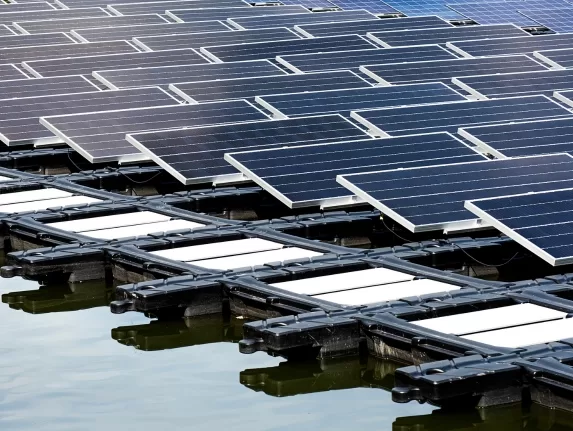In the past 24 hours, news has emerged about a significant renewable energy project in New Jersey. The state’s Canoe Brook Water Treatment plant has partnered with NJR Clean Energy Ventures, a subsidiary of natural gas firm New Jersey Resources, to build a vast array of solar panels on the surface of the Canoe Brook Reservoir. This 17-acre solar array, consisting of 16,510 solar panels, is now the largest floating solar array in North America, twice the size of the next-largest facility located in Sayreville, New Jersey.
The Canoe Brook Water Treatment plant produces 14 million gallons of drinking water a day, serving 84,000 homes and businesses in the area. The energy needed to pump and treat this water is substantial. However, the newly operational solar array, which started producing power in January 2023, generates 8.9 megawatts of electricity, enough to cover 95% of the water treatment plant’s energy requirements. This means the plant can rely on a greener and more efficient energy source to pump the water it treats.

New Jersey Floating Solar Array
Floating solar arrays are becoming more common in the U.S, after being long popular in Asia. A study published in the journal Nature Sustainability in March found that thousands of cities — more than 6,000 in 124 countries — could generate an amount equal to all their electricity demand using floating solar.
The cost of building the solar facility was not disclosed by either company involved, although they expressed that the project was mutually beneficial. For comparison, the Sayreville solar array, which is about half the size of the one in Millburn, cost $7.2 million to build.
We typically install floating solar arrays on human-made bodies of fresh water such as reservoirs or water treatment plant holding basins, because of the damaging effects of salt water on the equipment.They attach the solar panels to plastic floats secured at the reservoir’s bottom, which significantly cuts down on water evaporation into the air. Moreover, the water’s temperature aids in cooling the solar panels, which allows them to operate more efficiently.
This project is a significant step towards reducing the energy usage of water systems, according to New Jersey’s environmental protection commissioner, Shawn LaTourette.
However, the news articles did not detail the specific impact on water utility bills for the households and businesses they served 12.